Ever been in a fix trying to replace a brake light bulb, wondering if you can just grab any bulb off the shelf? You’re not alone. The question of whether brake light bulbs are universal is one that puzzles many drivers.
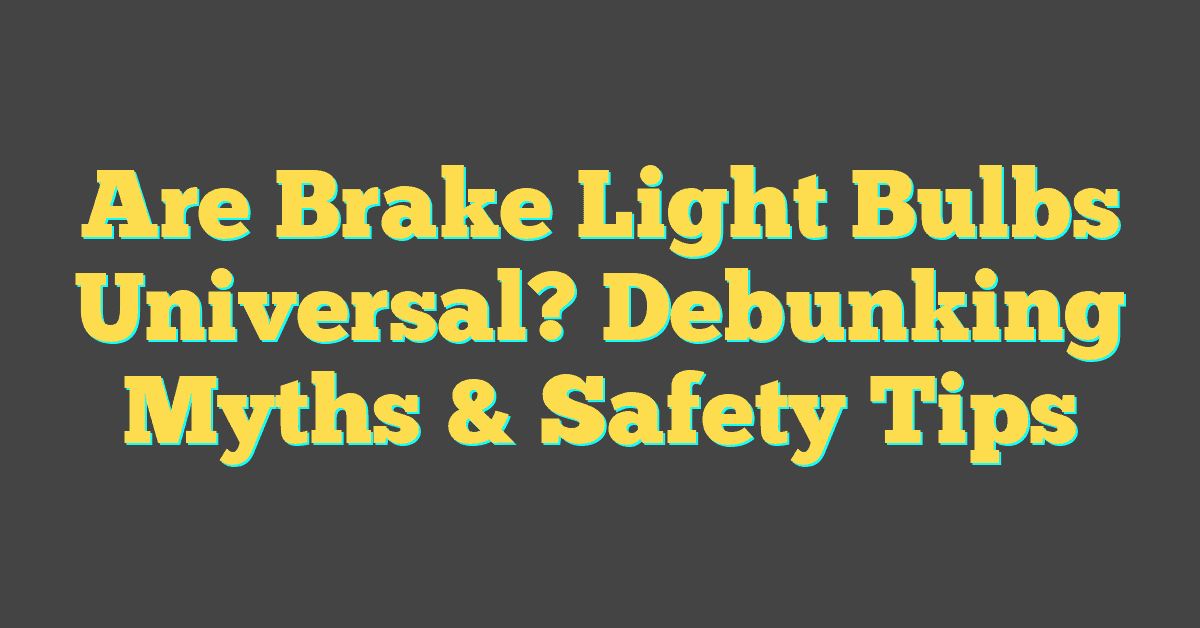
The truth is, there’s a bit more to consider than just the shape and size of the bulb. You’ve got to think about the bulb’s base type, wattage, and more. But don’t sweat it—we’re about to break it down for you.
So before you head to the auto parts store, let’s dive into the nitty-gritty of brake light bulbs and find out just how “one-size-fits-all” they really are.
The Importance of Brake Light Bulbs
When you’re zipping down the highway or navigating through city streets, safety is paramount. And it’s not just about how well you can stop your car; it also hinges on how effectively you communicate with other drivers. That’s where brake light bulbs come into play. They’re a critical component of your car’s communication system. Think of them as the red flags that wave frantically to alert the drivers behind you that you’re slowing down or coming to a halt.
Your car’s brake lights are engaged each time you press the brake pedal. This instant illumination is a cue for others to react accordingly. Without a functioning brake light bulb, the risk of rear-end collisions increases significantly. A study conducted by the National Highway Traffic Safety Administration (NHTSA) revealed that proper working brake lights can reduce these types of accidents by some margin.
Here’s an eye-opener:
| Incident Type | Percentage Reduced |
|---|---|
| Rear-end collisions | 4.3% |
| Collisions in daylight | 5.7% |
| Collisions during the night | 4.1% |
Think about DIY projects around the house. You’d never overlook the importance of the right lighting for functionality and ambiance. Similarly, in the motoring world, ensuring that your brake light bulbs are always in perfect condition is a non-negotiable aspect of your routine vehicle maintenance.
Remember, while brake light bulbs aren’t universal in the strict sense due to varying bases and wattages, they universally serve as a critical safety feature. Not only do you want the peace of mind that comes from knowing you’re doing everything you can to prevent accidents, but you’re also complying with the law. Nearly all states have regulations mandating functioning brake lights. It’s simple: Keeping your brake lights in top shape keeps you, and everyone else on the road, safer.
Understanding Bulb Types and Sizes
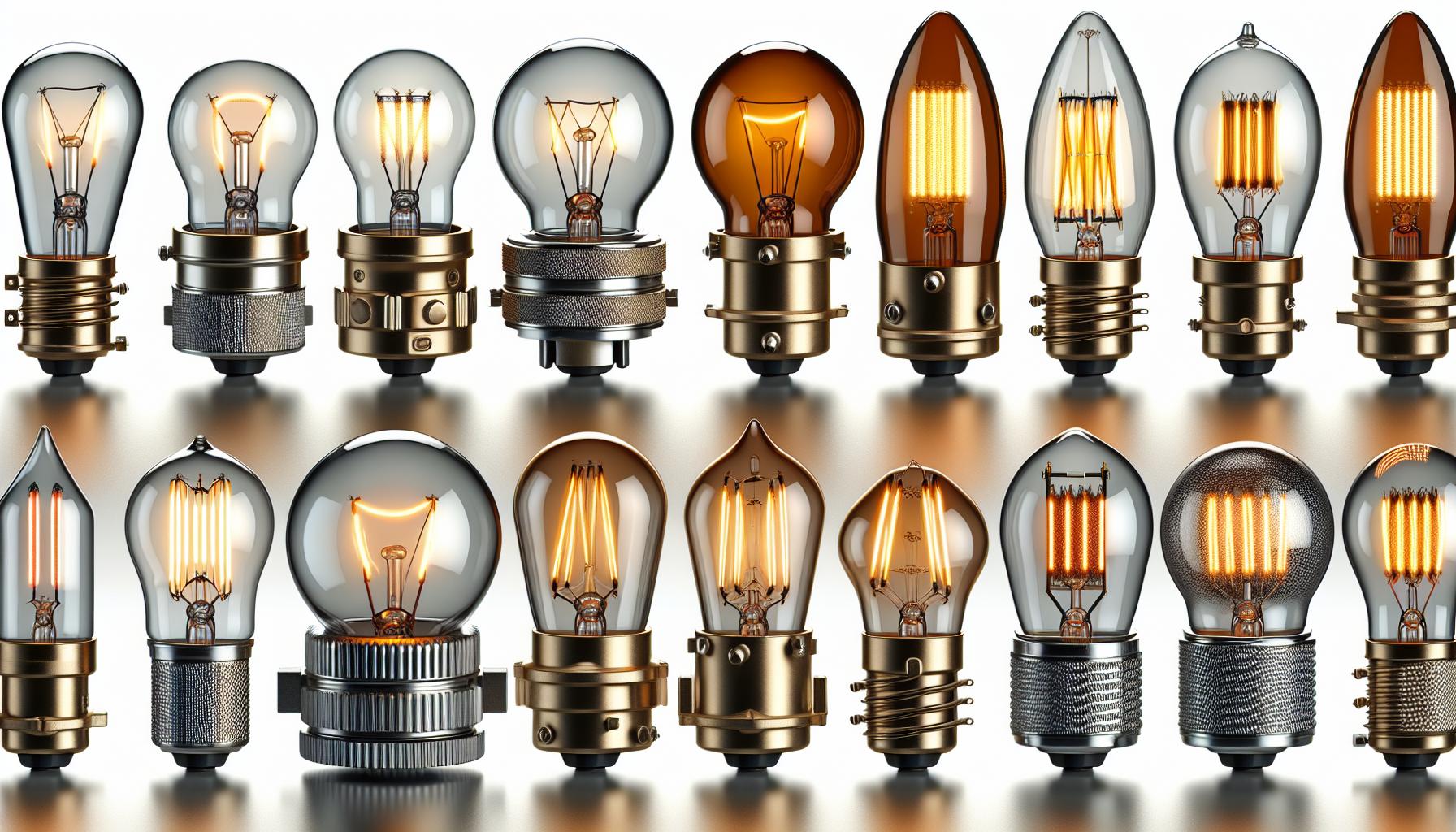
When you’re on a mission to replace or upgrade your brake light bulbs, you’ll quickly find that not all bulbs are created equal. There’s a myriad of types and sizes to choose from, and knowing the difference is crucial for both performance and compatibility.
First up, bulb types. These are often designated by a combination of letters and numbers – a code that identifies the bulb’s design and function. For example, you might come across numbers like 1157 and 7443. These aren’t random digits; they represent specific bulb types. The 1157, a common type, has dual filaments, making it suitable for a brake light that doubles as a taillight. Conversely, the 7443 also supports dual functions but is built with a different base and filament configuration.
Now let’s break down sizes. This isn’t just about the bulb’s physical dimensions. It’s about the fitting – the base that locks your bulb into place. You’ve got the bayonet base, typically seen in older models, where you need to push and twist to secure the bulb. There’s also the wedge base, which is more of a push-fit design, found in many modern vehicles. They’re not interchangeable, so picking the right one is vital.
It’s tempting to think of a “universal” bulb that fits every vehicle, but that’s a myth. Even when bulb types look similar, subtle differences can affect functionality. Here’s a pro tip: always check your vehicle’s manual or an online bulb finder to ensure you’ve got the right match. Making assumptions can lead to poor performance, or worse, a safety issue.
To sum it up, understanding bulb types and sizes is about more than just making sure your brake lights work. It’s about ensuring they provide the optimal level of safety and compliance with road regulations. Whether you’re a seasoned DIY enthusiast or a newcomer to car maintenance, getting to grips with these specifics will illuminate the path to a successful bulb change.
Factors to Consider When Choosing Brake Light Bulbs
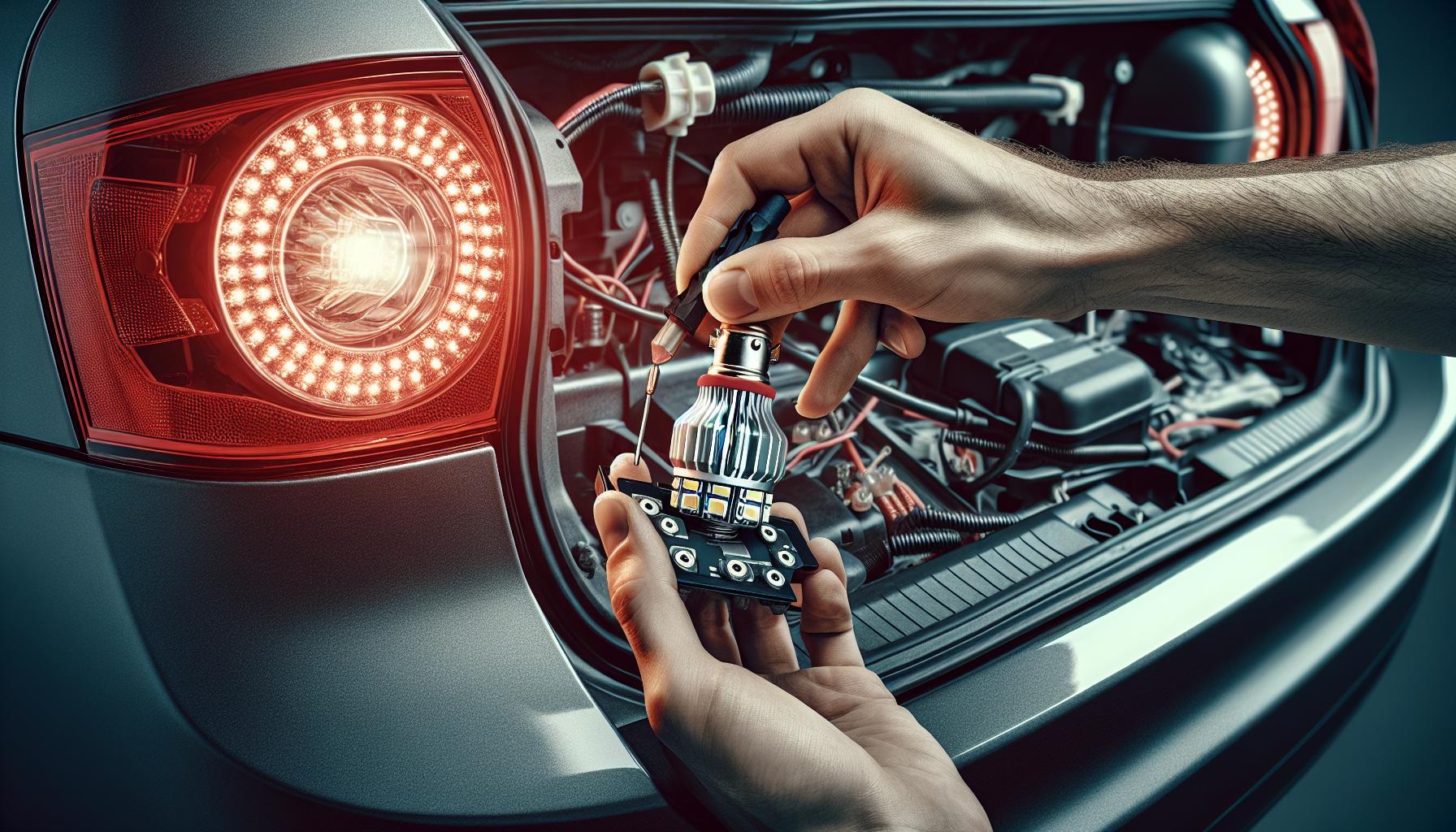
« When Was the Light Bulb Used in Homes? Discover the Dawn of Nighttime Illumination
What Are 100 Watt Light Bulbs: Understanding Brightness and Efficiency »
Choosing the right brake light bulbs for your car involves more than grabbing any old bulb off the shelf. It’s essential to take into account several factors to ensure you’re not left in the dark—literally or figuratively.
Compatibility should be your foremost concern. Despite the wide array of bulbs available, not every type can slot into your vehicle seamlessly. To prevent any missteps, consult your vehicle’s manual or a reliable automotive parts finder to grab the bulb that fits just right.
Brightness and clarity are paramount for safety. You’ll want bulbs that shine with unwavering luminosity, warning drivers behind you whenever you’re stopping. LED bulbs tend to outshine their incandescent counterparts, offering a brighter light with a quicker response time.
Here’s where you can delve into some DIY spirit—consider the installation process. Some bulbs are plug-and-play, affording you the joy of a quick and straightforward upgrade. Others might require a bit more finesse or even professional assistance. Weigh your comfort with tools against the installation demands.
Cost-effectiveness is another major player. Sure, you might want the brightest, longest-lasting bulb on the market, but your wallet may not agree. Strike a balance between quality and your budget. Remember, investing in a durable bulb could save you money long term by reducing the frequency of replacements.
Lastly, think about Longevity. How often do you want to revisit the task of replacing your brake light bulbs? If the answer’s “not very,” seek out bulbs known for their lengthy lifespans.
- LED bulbs typically last longer than incandescent ones.
- Higher quality bulbs may have longer warranties, indicating confidence in their longevity.
Keep a tab on these factors as you embark on your brake light bulb quest, and you’ll navigate the roads brightly and safely, without breaking the bank or the bulb.
Compatibility with Different Car Models
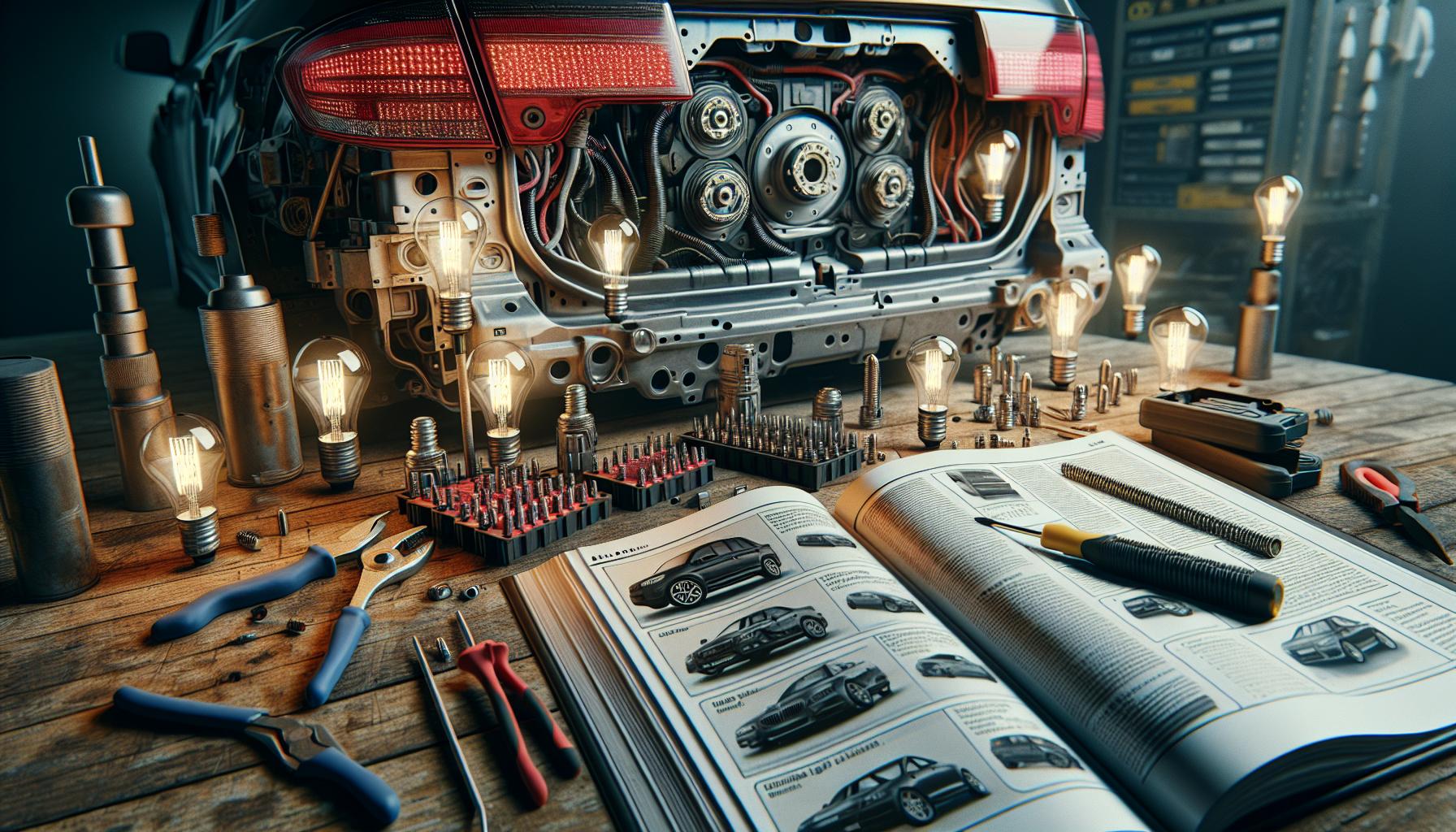
When it comes to brake light bulbs, compatibility should be your top priority. Not all brake light bulbs are universal—far from it. Each car make, model, and year has a designated bulb size and type, tailor-made to fit its specific socket and electrical requirements.
Start by diving into your car’s manual, a treasure trove of specifications. You’ll find the exact bulb size and type recommended by the manufacturer. This small step can save you from the headache of purchasing the wrong bulb. If the manual seems like it’s written in hieroglyphs, online automotive parts finders can be a lifesaver. Just punch in your vehicle’s details and voilà, you’ll have a list of compatible bulbs at your fingertips.
You might be a DIY enthusiast who enjoys the thrill of experimentation. It’s tempting to try out a different bulb that promises brighter light or longer life. However, mismatched bulbs can lead to an array of issues, from simple malfunctions to electrical problems. Moreover, using a bulb that’s too powerful could melt your brake light’s housing or even blind other drivers—a risk you wouldn’t want to take.
LED Bulbs and Modern Cars
Modern cars often play well with LED bulbs, which have become famous for their efficiency. LED technology has advanced to offer plug-and-play solutions, allowing for seamless integration with various car models. But still, it’s not a one-size-fits-all deal. For classic cars or earlier models, LED bulbs may require additional components like load resistors to mimic the electrical load of traditional incandescent bulbs and prevent hyper-flashing or error messages on your dashboard.
Here’s a quick snapshot of compatibility considerations:
- Check the owner’s manual or use an online parts finder for the correct bulb size and type.
- Ensure the bulb’s voltage and wattage align with your vehicle’s specifications.
- When switching to LEDs, verify whether your car requires additional components.
By taking these steps, you’ll be paving the way towards a well-lit and reliable brake light system that works in harmony with your car’s design and electrical framework. Keep these points in mind to ensure safe and satisfying results in your brake light bulb replacement journey.
Common Myths about Brake Light Bulbs
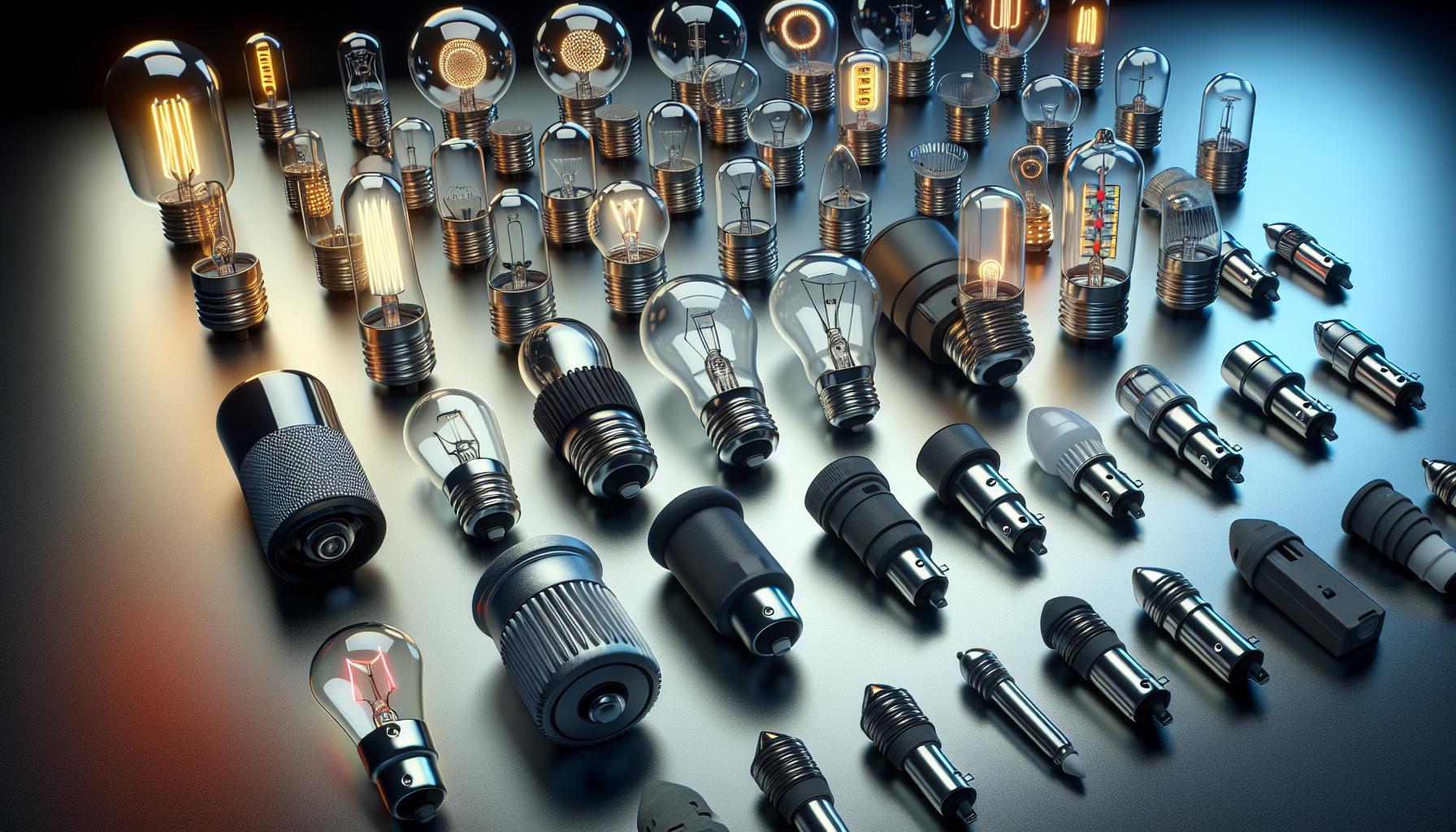
Myth 1: All Brake Light Bulbs Are the Same
You might’ve heard the claim that brake light bulbs are universal—that any bulb will fit any vehicle. Here’s the truth: they’re not one-size-fits-all. Cars are designed with various sockets and electrical requirements. Picking the wrong type can not only be a waste of your time and money but can also pose a safety risk.
Myth 2: Higher Wattage Means Better Visibility
It’s easy to believe that the more wattage a bulb has, the more visible it’ll be. However, your car’s brake light system is designed to operate within a specific wattage range. A bulb that’s too powerful can damage your vehicle’s wiring or melt the light fixture.
Myth 3: Changing Brake Light Bulbs Is Complicated
Although it might seem like a task for a professional, changing brake light bulbs is typically a straightforward process that you can do at home with basic tools. Always reference your vehicle’s manual for guidance to ensure you swap the bulbs correctly.
Debunking LED Misconceptions
- LED bulbs will instantly blow out if they’re not compatible with your car.
- In fact, most LEDs will still function; they just won’t perform optimally.
- You can’t use LEDs if your car wasn’t originally equipped with them.
- Not true; it’s often possible, but you may need an adapter or a new fixture to accommodate the LED bulbs properly.
Remember, it’s crucial to get your facts straight when dealing with any aspect of your vehicle. Misinformation can lead not only to unnecessary costs but also potential safety hazards. So before you go shopping for your next brake light bulb, make sure you’re equipped with the right information and say goodbye to those pesky myths.
Conclusion
You’ve seen that choosing the right brake light bulb isn’t as simple as you might have thought. It’s crucial to get the correct type for your vehicle to ensure safety and avoid any potential damage. Don’t fall for the wattage myth; it’s all about compatibility, not just brightness. And remember, while swapping out brake light bulbs is usually a breeze, don’t hesitate to reach out for professional help if you’re unsure. Armed with the right info, you’ll steer clear of the common pitfalls and keep your car’s lighting in top-notch condition. Stay safe and illuminated on the road!
Frequently Asked Questions
What types of brake light bulbs are there?
Brake light bulbs are not universal. There are several types, including standard incandescent bulbs, halogen bulbs, and LED bulbs. Each type has different specifications and compatibility varies by vehicle model.
Can using the wrong brake light bulb be unsafe?
Yes, picking the wrong type of brake light bulb can pose a safety risk. It can lead to malfunctioning lights or even damage to the vehicle’s electrical system, impacting visibility on the road.
Does a higher wattage brake light bulb provide better visibility?
Not necessarily. While a brighter bulb can improve visibility, using a bulb that is too powerful for your vehicle can damage the wiring. It’s important to use the correct wattage for your car.
Is changing brake light bulbs a complex task?
Changing brake light bulbs is typically a straightforward process. It can usually be done at home with basic tools, following the vehicle’s manual or instructional videos.
Can you use LED bulbs if they’re not compatible with my car?
Most LED brake light bulbs will still function even if not specifically compatible with the vehicle. However, an adapter or a new fixture may be needed to properly use LEDs in cars not originally equipped with them.
Is it necessary to seek professional help when choosing brake light bulbs?
While professional help is beneficial, particularly for specific technical advice or installation, accurate information for choosing brake light bulbs can be found in the vehicle’s manual or reputable automotive sources online.




